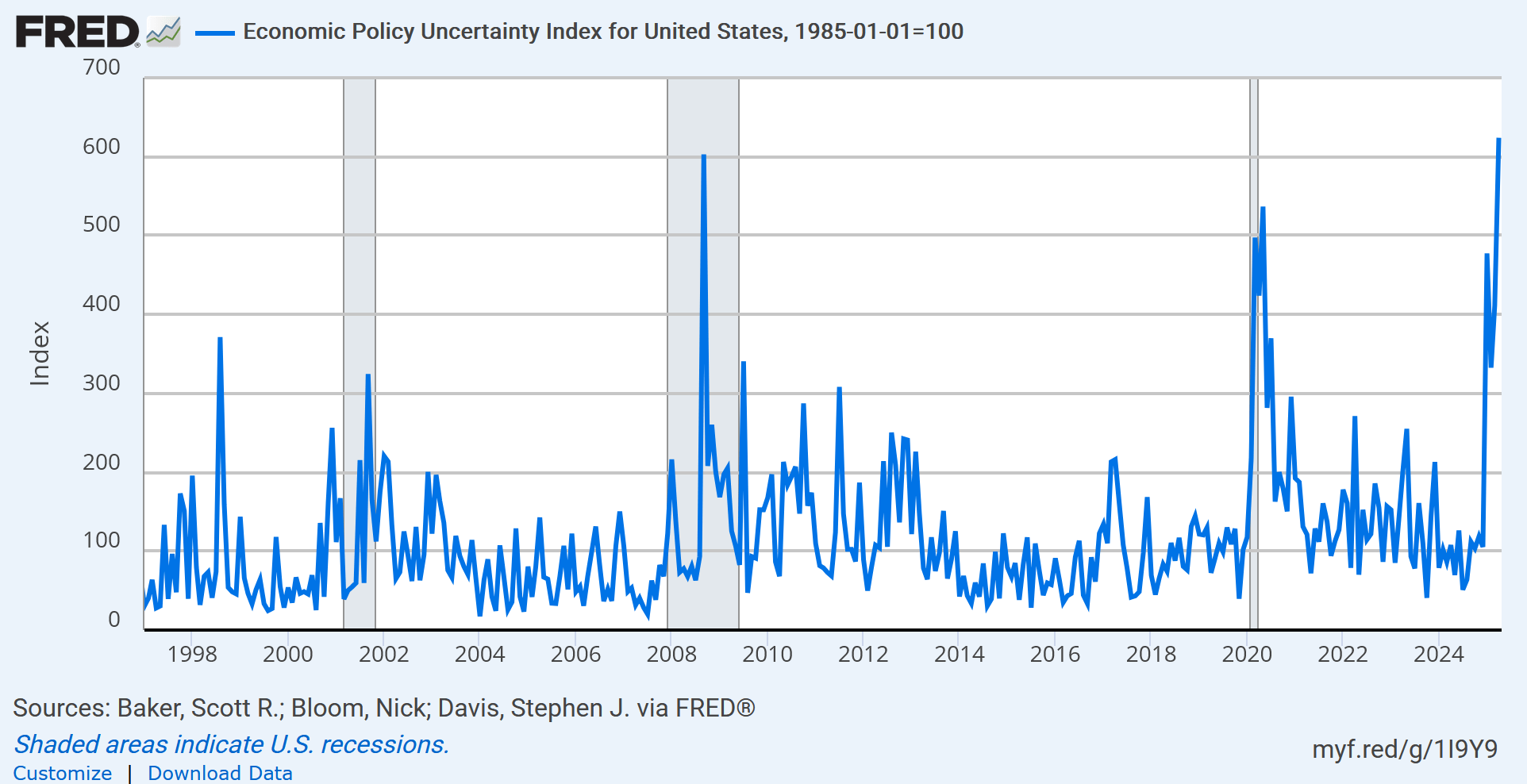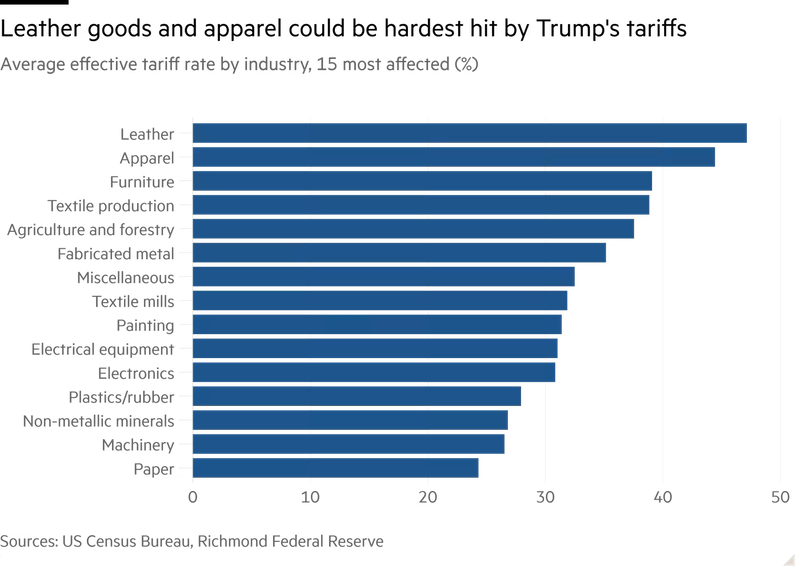In a world where global supply chains are already under pressure from fluctuating demand, geopolitical instability, and material shortages, tariffs add yet another unpredictable variable to the mix. Businesses that fail to account for these sudden cost changes risk eroding profit margins, misallocating inventory, or worse—losing market share to more agile competitors.
At Promethean Analytics, we understand how these complexities ripple through every layer of the supply chain. Let’s explore how tariffs complicate planning and how advanced modeling can help companies respond with clarity and confidence.

The Tariff Tangle: A Supply Chain Nightmare
Uncertainty and volatility are currently at their peak since the Covid pandemic. Several factors contribute to this uncertainty, including structural economic disruptions, global events, and financial crises. Additionally, policy decisions can significantly impact economic uncertainty. In the graph below, we use the Economic Policy Uncertainty (EPU) index to analyze the role of policy-related uncertainty in the recent surge of overall uncertainty.

The recent spike in trade policy uncertainty aligns with the announcement of new tariff policies in early 2025. Tariffs act like a moving target and can alter landed costs overnight. The consequences? Contract renegotiations, shifts in sourcing strategies, and margin erosion. What once looked like a profitable SKU may suddenly become a loss leader. Many industries are facing significant challenges due to the latest round of tariffs, with some sectors bearing the brunt of the economic strain. In particular, industries such as apparel, furniture, and electronics have been more severely impacted, as rising costs and disrupted supply chains continue to affect their operations.

For planners and executives relying on historical data or fixed assumptions, the result can be planning paralysis or flawed decision-making.
Tariffs create the need for a new kind of what-if analysis. Modeling must go beyond simple cost inputs—it must only support multi-sourcing, but also simulate sourcing shifts, transportation re-routes, and supplier substitutions, all in real time. The most resilient organizations are using scenario modeling to account for tariff-related uncertainty.
Let’s say a U.S. manufacturer sources key components from China. A sudden tariff hike could:
-
- Spike total landed costs
- Erode profit margins
- Trigger demand shifts from price-sensitive customers
- Make nearshoring or supplier changes more viable
Without integrated planning that includes tariff simulations, teams may resort to reactive decision-making—or worse, make no change at all.
Building Resiliency Through Smart Modeling
At Promethean Analytics, we help clients build responsive planning systems using Oracle and NetSuite solutions tailored to evolving global conditions. The key is flexibility.
Using scenario modeling and advanced analytics, we enable companies to:
-
- Evaluate multiple sourcing and production strategies side-by-side
- Simulate tariff changes and visualize financial impacts
- Integrate real-time data to adjust plans before disruptions occur
- Align cross-functional teams on trade-offs between cost, service levels, and risk
By embedding tariff modeling into your sales and operations planning (S&OP) process, you move from reactive to proactive. Planners gain a crystal-clear view of risk, and executives can make confident data-driven decisions. Backed with the right planning framework, businesses can turn this volatility into a competitive edge.
Promethean Analytics is here to help you navigate the complexity. Whether you’re dealing with multi-tier BOMs, global supplier networks, or intricate cost structures, our team ensures your supply chain plan is robust, agile, and built to adapt.